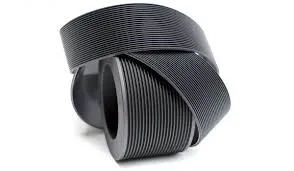- Arabic
- French
- Russian
- Spanish
- Portuguese
- Turkish
- Armenian
- English
- Albanian
- Amharic
- Azerbaijani
- Basque
- Belarusian
- Bengali
- Bosnian
- Bulgarian
- Catalan
- Cebuano
- Corsican
- Croatian
- Czech
- Danish
- Dutch
- Afrikaans
- Esperanto
- Estonian
- Finnish
- Frisian
- Galician
- Georgian
- German
- Greek
- Gujarati
- Haitian Creole
- hausa
- hawaiian
- Hebrew
- Hindi
- Miao
- Hungarian
- Icelandic
- igbo
- Indonesian
- irish
- Italian
- Japanese
- Javanese
- Kannada
- kazakh
- Khmer
- Rwandese
- Korean
- Kurdish
- Kyrgyz
- Lao
- Latin
- Latvian
- Lithuanian
- Luxembourgish
- Macedonian
- Malgashi
- Malay
- Malayalam
- Maltese
- Maori
- Marathi
- Mongolian
- Myanmar
- Nepali
- Norwegian
- Norwegian
- Occitan
- Pashto
- Persian
- Polish
- Punjabi
- Romanian
- Samoan
- Scottish Gaelic
- Serbian
- Sesotho
- Shona
- Sindhi
- Sinhala
- Slovak
- Slovenian
- Somali
- Sundanese
- Swahili
- Swedish
- Tagalog
- Tajik
- Tamil
- Tatar
- Telugu
- Thai
- Turkmen
- Ukrainian
- Urdu
- Uighur
- Uzbek
- Vietnamese
- Welsh
- Bantu
- Yiddish
- Yoruba
- Zulu
Σεπ . 28, 2024 02:00 Back to list
Understanding the Timing Belt Mechanism in Sewing Machines for Optimal Performance
Understanding Sewing Machine Timing Belts
Sewing machines are intricate devices that rely on a variety of components to function effectively, and one of the most critical elements is the timing belt. The timing belt plays a vital role in ensuring that the needle, feed dogs, and various other components work together seamlessly. Understanding its function and how to maintain it can significantly enhance the performance of your sewing machine.
The Role of Timing Belts
The primary function of the timing belt in a sewing machine is to synchronize the movement of crucial parts. When you press the foot pedal, the timing belt transmits power from the motor to the needle and feed dog mechanism. This synchronization is essential; if the timing is off even slightly, it can lead to uneven stitching, skipped stitches, or even damage to the machine. In essence, the timing belt acts as the heartbeat of the sewing machine, ensuring all parts are functioning in harmony.
Signs of a Worn Timing Belt
Like any mechanical component, timing belts can wear out over time. Here are some common signs that your sewing machine’s timing belt may need attention
1. Uneven Stitches If you notice that your stitches are not uniform or have become irregular, it might be a sign that the timing belt is stretching or becoming loose, leading to improper synchronization. 2. Skipped Stitches Similar to uneven stitches, skipping can occur if the needle's path is not correctly timed with the feed dogs, pointing to a potential issue with the belt.
3. Strange Noises Unusual sounds, such as grinding or whining, can indicate that the timing belt is malfunctioning or that other parts it drives are not operating smoothly.
4. Visible Wear If you can access the belt, look for signs of fraying, cracks, or discoloration. These are clear indicators that it may be time to replace the belt.
sewing machine timing belt

Maintenance Tips
Maintaining the timing belt is crucial for the longevity and performance of your sewing machine. Here are some tips
- Regular Inspection Periodically check the timing belt for any visible signs of wear or damage. Catching issues early can prevent more severe problems down the road.
- Avoid Overloading Ensure that you are not overloading your machine with heavy fabrics or multiple layers. Excessive strain on the machine can wear out the timing belt faster.
- Keep it Clean Dust and debris can accumulate on the belt, potentially causing slipping. Regular cleaning of your machine’s interior, especially around the timing belt, will help keep it in good condition.
- Lubrication While timing belts do not typically require lubrication, ensuring that other machine parts are well-lubricated can improve overall functioning, reducing wear on the belt.
Conclusion
The timing belt is a fundamental component of a sewing machine that directly impacts its performance. Understanding its importance, recognizing the signs of wear, and practicing proper maintenance can help prolong the lifespan of your machine and ensure smooth, reliable operation. By taking care of your timing belt, you enhance not only the efficiency of your sewing machine but also the enjoyment of your sewing projects. Remember, a well-maintained machine is key to achieving the best results in your sewing endeavors.
-
Korean Auto Parts Timing Belt 24312-37500 For Hyundai/Kia
NewsMar.07,2025
-
7PK2300 90916-T2024 RIBBED BELT POLY V BELT PK BELT
NewsMar.07,2025
-
Chinese Auto Belt Factory 310-2M-22 For BMW/Mercedes-Benz
NewsMar.07,2025
-
Chinese Auto Belt Factory 310-2M-22 For BMW/Mercedes-Benz
NewsMar.07,2025
-
90916-02660 PK Belt 6PK1680 For Toyota
NewsMar.07,2025
-
drive belt serpentine belt
NewsMar.07,2025

